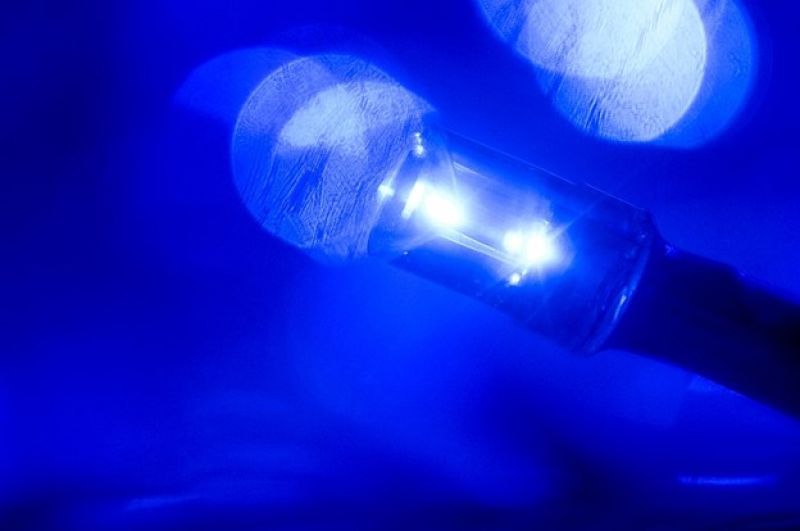LED lights have become increasingly popular due to their energy efficiency, long lifespan, and vibrant colors. However, encountering issues with your LED lights not turning blue can be frustrating.
There are several reasons why this might happen, ranging from simple fixes to more complex electrical problems. In this article, we will explore Why Is My LED Lights Not Turning Blue?
Table of Contents
Why Is My LED Lights Not Turning Blue?
There could be several reasons why your LED lights are not turning blue:
- The blue LED component may be faulty or damaged.
- The wiring connections may be incorrect or loose.
- The power supply may not match the requirements of the LED lights.
- The dimmer switch, if installed, may not be compatible with LED bulbs.
- It’s recommended to check these factors to troubleshoot the issue.

Why Is My LED Lights Not Turning Blue? possible explanations
Incorrect Wiring
One possible reason why your LED lights are not turning blue is incorrect wiring. It’s essential to ensure that the wiring connections are properly established. Faulty wiring can disrupt the flow of electricity and prevent the blue LED component from functioning correctly.
Faulty LED Bulb
A faulty LED bulb can also be the culprit behind the lack of blue light. Over time, LEDs can degrade or burn out, causing certain colors to become non-functional. If the blue component of the LED bulb has failed, it will result in the absence of blue light.
Compatibility Issues
Compatibility issues can arise when using LED lights from different manufacturers or models. In some cases, the LED controller or driver may not be compatible with the specific LED bulb, leading to issues with color reproduction. This can result in the LED lights not displaying blue as intended.
Dimmer Switch Incompatibility
If you have installed dimmer switches for your LED lights, it’s important to ensure they are compatible with the bulbs. Some dimmer switches are not designed to work with LED lights, especially those with specific color requirements. Using an incompatible dimmer switch can cause color inconsistencies, including the absence of blue light.
Power Supply Problems
Issues with the power supply can affect the functionality of LED lights. Insufficient power or voltage fluctuations can impact the performance of the LEDs, leading to color irregularities. If your LED lights are not receiving the necessary power, it may result in the blue light not turning on.
Troubleshooting Steps – Why Are My LED Lights Not Turning Blue
If you are facing the issue of your LED lights not turning blue, you can try the following troubleshooting steps:
Check the Wiring Connections
Inspect the wiring connections to ensure they are securely connected and in the correct order. Loose or incorrect wiring can prevent the blue LED component from receiving the necessary power.
Replace the LED Bulb
If you suspect a faulty LED bulb, try replacing it with a new one. Ensure that the replacement bulb is compatible with your LED lighting system and that the blue LED component is functioning correctly.
Ensure Compatibility
Verify the compatibility of your LED lights, controller, and driver. Using components from different manufacturers or models can lead to color inconsistencies. Ensure that all components are designed to work together for optimal performance.
Verify Dimmer Switch Compatibility
If you have a dimmer switch installed, check its compatibility with the LED bulbs. Consider using a dimmer switch specifically designed for LED lights to avoid color issues. Ensure that the dimmer switch supports the full-color spectrum, including blue.
Check the Power Supply
Inspect the power supply for any issues. Ensure that the LED lights are receiving the correct voltage and that there are no power fluctuations. Consider consulting an electrician to evaluate the electrical system if you suspect power supply problems.
Consult a Professional Electrician
If the troubleshooting steps mentioned above do not resolve the issue, it is advisable to seek assistance from a professional electrician. They can thoroughly inspect the LED lighting system, identify any underlying electrical problems, and provide appropriate solutions.
Conclusion
Encountering issues with LED lights not turning blue can be frustrating, but with the right troubleshooting steps, you can resolve the problem. Start by checking the wiring connections, replacing any faulty bulbs, ensuring compatibility between components, verifying dimmer switch compatibility, and evaluating the power supply.
If all else fails, consult a professional electrician to diagnose and rectify any underlying electrical issues.
Related Post:
- Best Outdoor Christmas String Lights For Trees
- Best Christmas lights to hang on the house
- Smart Christmas tree lights
- why does only half a string of lights work
FAQs
Can I use any dimmer switch with LED lights?
No, not all dimmer switches are compatible with LED lights. It’s important to choose a dimmer switch specifically designed for LED lighting to ensure proper functionality and color consistency.
Why is the blue light not working on my LED strip?
The lack of blue light on an LED strip could be due to several reasons, such as faulty wiring, a defective LED strip segment, or an incompatible power supply. Troubleshooting the specific issue can help identify and resolve the problem.
What should I do if my LED light bulb is not turning blue?
If your LED light bulb is not displaying blue light, you can try replacing the bulb with a new one to rule out any faults with the LED component. Ensure compatibility between the bulb and your LED lighting system.
Can power supply issues affect LED light colors?
Yes, power supply problems such as insufficient voltage or fluctuations can affect the performance and color reproduction of LED lights. It’s important to ensure the LED lights are receiving the correct power supply.
When should I consult a professional electrician for LED light issues?
If you have exhausted all troubleshooting steps and are still facing problems with your LED lights, it is advisable to consult a professional electrician. They have the expertise to diagnose and resolve complex electrical issues.